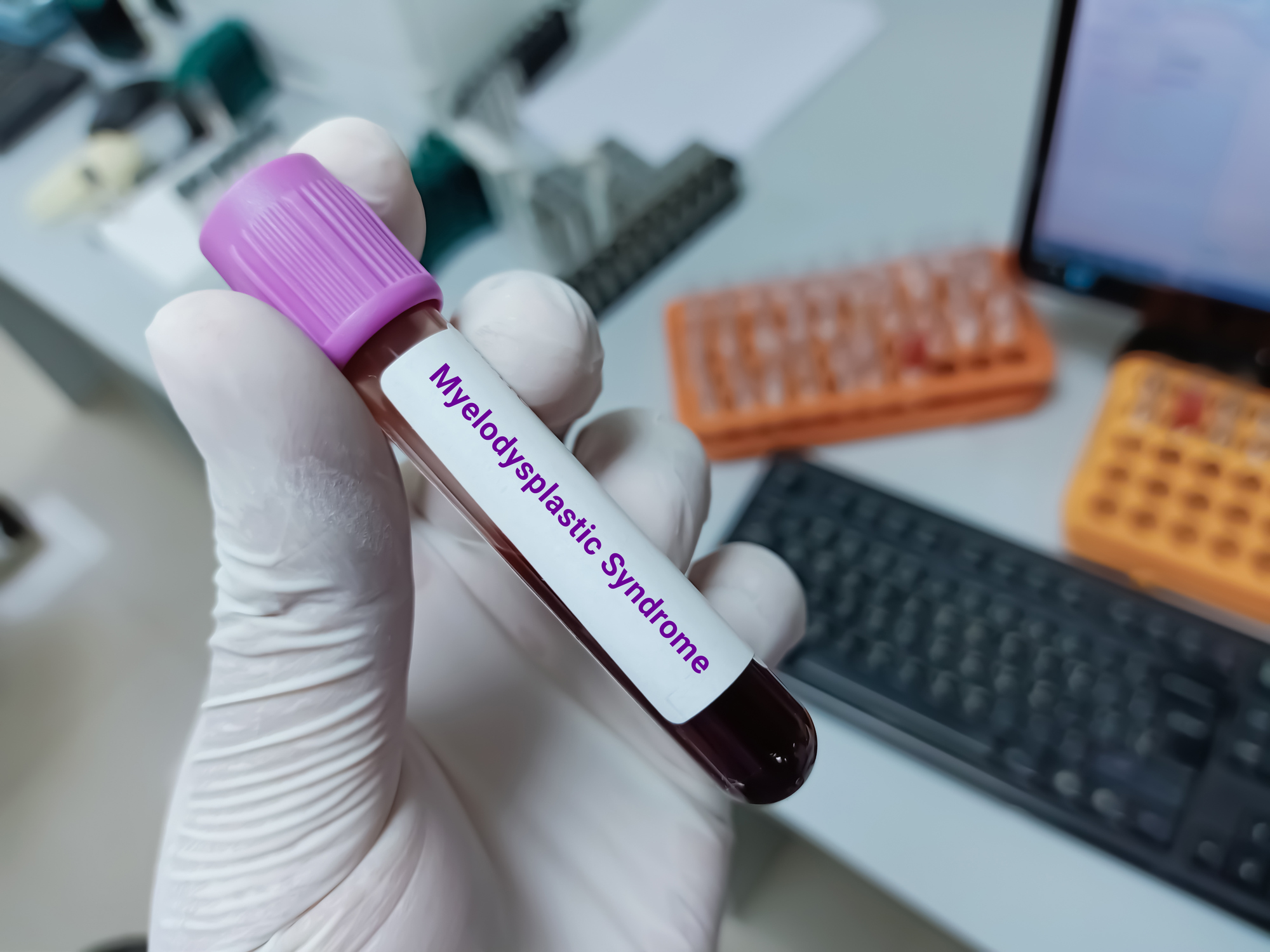
Researchers have developed and externally validated a clinical-molecular prognostic model for risk stratification in patients with myelodysplastic syndromes (MDS). The new model combines genomic profiling with hematologic and cytogenetic parameters, according to the group.
Currently, risk stratification and therapeutic decision-making is based on the International Prognostic Scoring System-Revised (IPSS-R), the authors, led by Elsa Bernard, PhD, of Memorial Sloan Kettering Cancer Center, wrote. They reported that their model, the IPSS-Molecular (IPSS-M) improves accuracy in clinical endpoints, including overall survival (OS) and acute myeloid leukemia (AML) transformation.
“Compared with the IPSS-R, the IPSS-M resulted in improved prognostic accuracy across all long-term clinical end points (OS, [leukemia-free survival], AML transformation) and restratified nearly half of patients with MDS (46%),” the authors noted.
The new IPSS-M calculator model uses blood counts, marrow blasts, the five IPSS-R cytogenetic categories, 16 main effect genes, and 15 residual genes from the data of 3,711 patients.
Among restratified patients, 294 of 1,223 (24%) had one mutated gene in IPSS-M, whereas 760 of 1,223 (62%) had two or more. Thus, patient restratification was not a single-gene effect, but the cumulative contribution of the prognostic mutations for each patient.
The investigators mapped at least one oncogenic genomic alteration in 94% of patients with MDS. Strong predictors of adverse outcomes were TP53multihit, FLT3 mutations, and mixed-lineage leukemia partial tandem duplications. Conversely, SF3B1 mutations were associated with favorable outcomes, they reported.
The authors noted that studies from the past 20 years have demonstrated the effects of gene mutations in patients with MDS, including patients undergoing transplantation, but insights from that data were not integrated in such a way that clinicians could use.
“Their prognostic readouts have not been integrated in a comprehensive prognostic system and could therefore not be reliably and uniformly applied in daily clinical practice,” the authors wrote.
The investigators differentiated their new IPSS-M calculator model from other recently developed models in terms of the following properties:
- Personalized (a continuous score with a virtually unique value per patient)
- Interpretable (a one-unit increase in score results in doubled risk)
- Reproducible (an applicable mathematical formula and an online calculator)
- Flexible and transparent strategy to account for missing values
“Combining genomic profiling with hematologic and cytogenetic parameters, the IPSS-M improves the risk stratification of patients with MDS and represents a valuable tool for clinical decision-making,” the authors concluded.
To facilitate clinical adoption, the researchers have published an IPSS-M web calculator at https://mds-risk-model.com.
Reference
Bernard E, Tuechler H, Greenberg PL, et al. Molecular International Prognostic Scoring System for Myelodysplastic Syndromes. NEJM Evidence. 2022; 1(7). doi/10.1056/EVIDoa2200008





 © 2025 Mashup Media, LLC, a Formedics Property. All Rights Reserved.
© 2025 Mashup Media, LLC, a Formedics Property. All Rights Reserved.